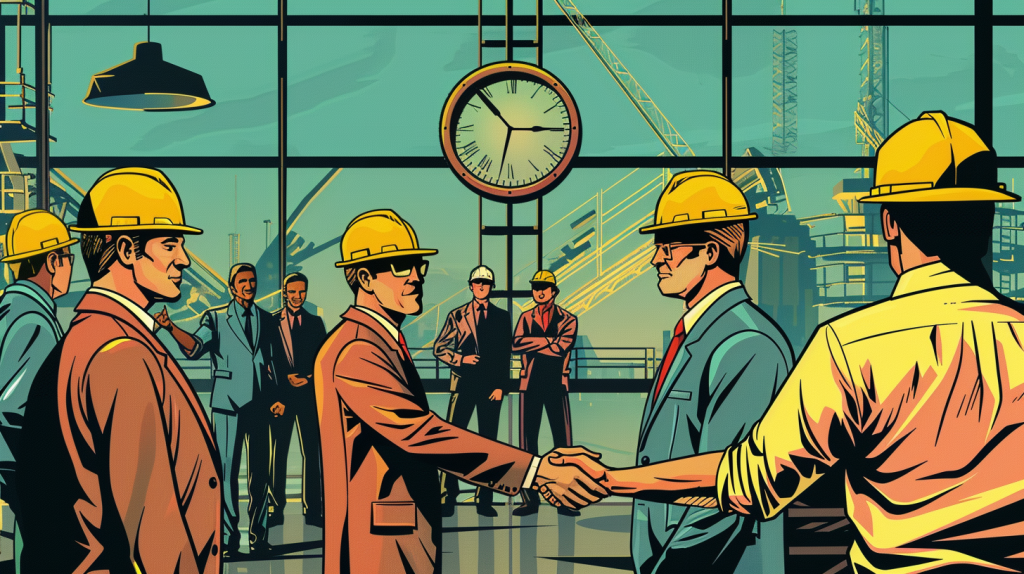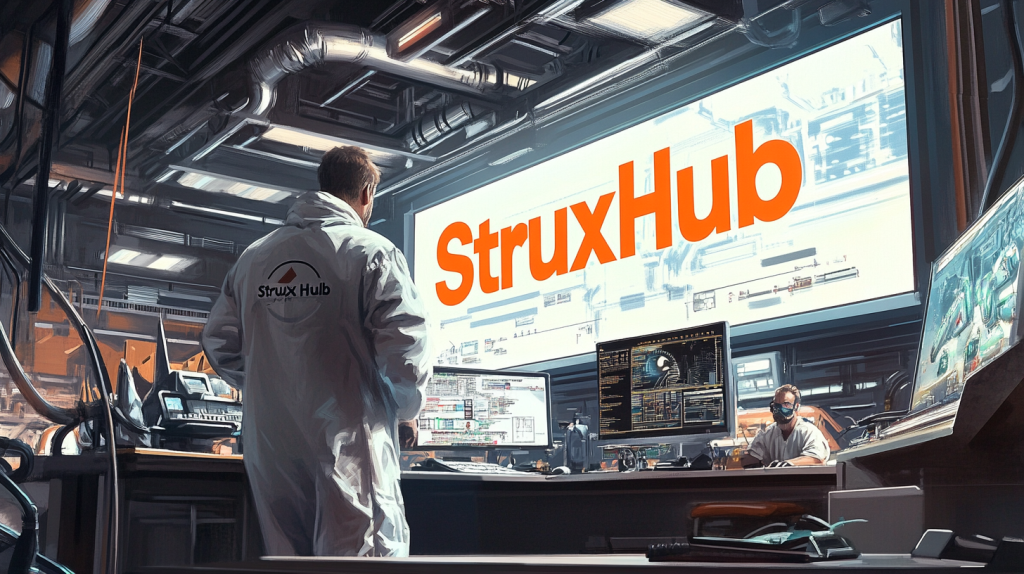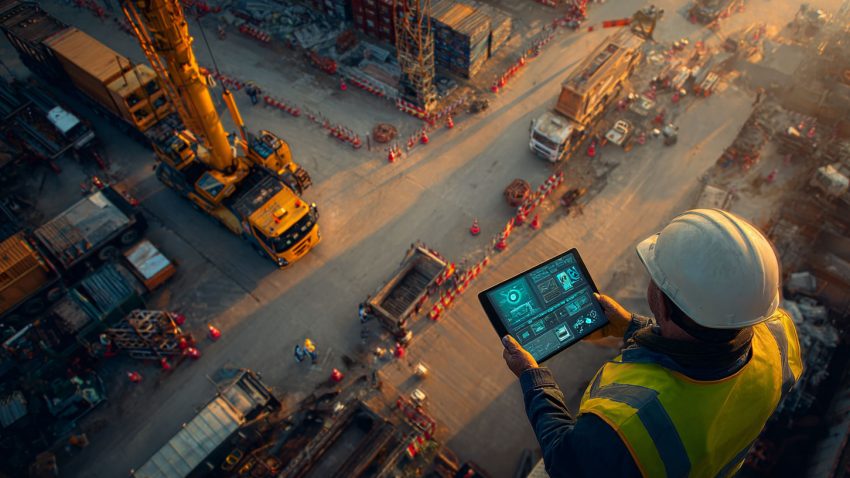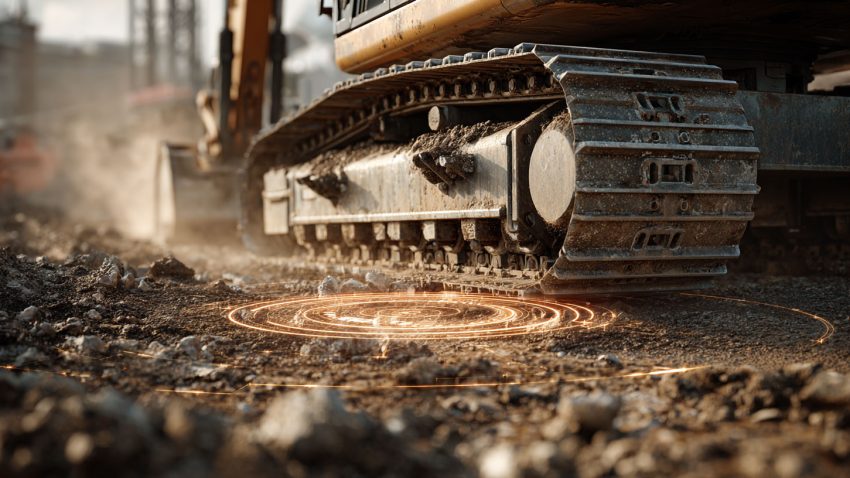AI Scheduling vs Real-Time Construction Software: What Works Best on the Jobsite?
Table of Contents:
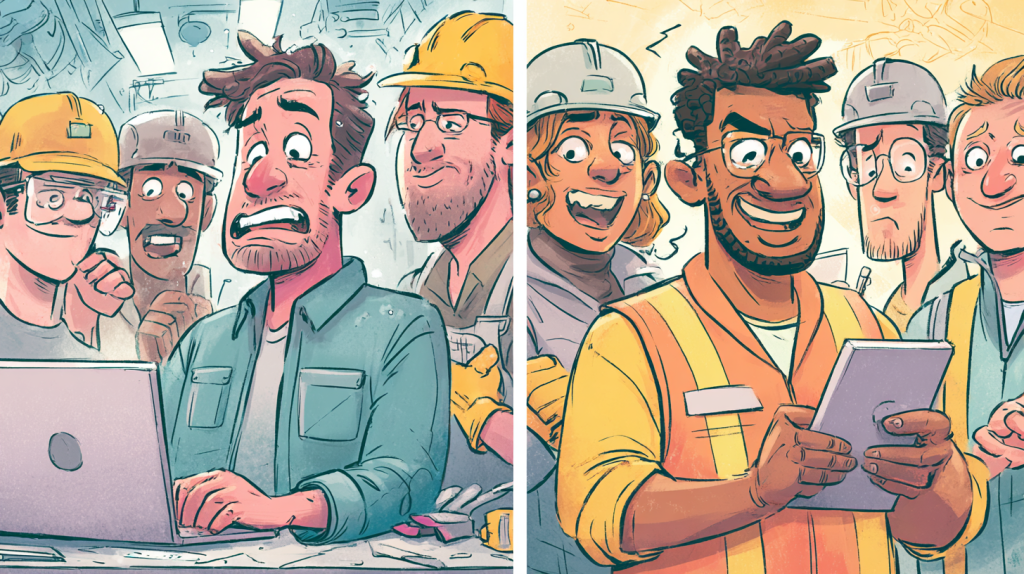
Why Scheduling Tools Are Evolving in the Construction Industry
Construction schedules used to live on whiteboards, spreadsheets, or static PDF charts. But as projects grow more complex and teams work across multiple locations, those old methods are falling behind. Today, the push toward smarter, faster coordination has introduced two major solutions into the field: AI scheduling platforms and real-time construction software. Both are transforming how jobs get done—but in very different ways.
AI scheduling tools are built to forecast project timelines. They use historical data, productivity benchmarks, and predictive models to adjust future tasks and flag risks. These platforms work well for planning and high-level coordination, especially during preconstruction or long-range updates. They can help identify where bottlenecks might form or which trade is likely to fall behind based on past performance.
On the other hand, real-time construction software focuses on what’s happening right now. It enables superintendents and field teams to track daily progress, log delays, shift assignments, and resolve issues as they unfold. It doesn’t rely on projections—it reflects the actual pace and challenges of the jobsite in real time.
Understanding how these two systems work—and how they differ—can help construction leaders choose the best approach for their project. It’s not always about which one is better, but which one is right for the moment.
Top Features
- AI tools: predictive timelines, risk modeling, auto-schedule updates
- Real-time software: task tracking, daily logs, live crew status
- Data integration with schedules, documents, and field reports
- Alerts and updates driven by live input or forecasted scenarios
Top Benefits
- AI scheduling improves foresight and planning accuracy
- Real-time tools enhance coordination and fast decision-making
- Both systems reduce communication gaps across field and office
- Greater visibility into the status and health of the project
Best Practices
- Use AI tools during planning and for forecasting future risks
- Rely on real-time platforms to track daily jobsite activity
- Combine insights from both systems to build smarter workflows
- Train teams to update field conditions consistently for better accuracy
The future of construction scheduling isn’t just about looking ahead—it’s about staying connected to what’s happening right now. Choosing the right tool depends on how close you need to be to the field.
What Is AI Scheduling and Where Does It Excel?
AI scheduling tools are designed to automate and enhance the planning phase of a construction project. Using data from past projects, labor productivity rates, material timelines, and even weather patterns, these platforms can adjust schedules automatically and suggest ways to avoid delays. The primary value lies in their predictive power—they help project managers see what could go wrong before it actually does.
These tools are especially useful for long-term projects with many moving parts. They can identify high-risk areas, adjust milestones based on past trade performance, and even reroute sequences based on projected productivity. AI can also simulate different schedule scenarios to help teams decide which path is most efficient.
However, AI scheduling is only as good as the data it receives. If jobsite conditions change suddenly or teams don’t update progress in real time, the AI won’t reflect reality. That’s why these tools work best in combination with systems that keep pace with daily activity. They’re excellent for planning and forecasting, but they don’t always capture the fluid nature of fieldwork.
Top Features
- Machine learning models trained on project history
- Automated updates based on performance trends
- Risk alerts for potential delays or dependencies
- Scenario testing and optimization suggestions
Top Benefits
- Improves planning with data-driven forecasting
- Helps identify hidden schedule risks early
- Reduces reliance on manual updates and rework
- Supports better client communication with visual projections
Best Practices
- Feed the system consistent, accurate data from the field
- Use during preconstruction or milestone planning reviews
- Review AI predictions weekly to stay ahead of issues
- Combine with real-time updates to ground forecasts in reality
AI scheduling gives construction teams a clearer path forward—but it still needs boots-on-the-ground context to keep the plan aligned with reality.
Related Articles:
Best Guide to AI in Construction Project Management: How Smart Tools Are Improving Construction Site Productivity; AI
Best Guide to Geographic Information Systems (GIS) in Construction: How Location-Based Data Improves Construction Project Management
Best Guide to Smart Helmets in Construction: Enhancing Safety, Communication, and Site Efficiency
Best Construction Scheduling Software for General Contractors and Superintendents
Best Guide to Solar Farm Construction Management: Top Solar Construction Management Software for Tracking Projects, Deliveries, and Compliance
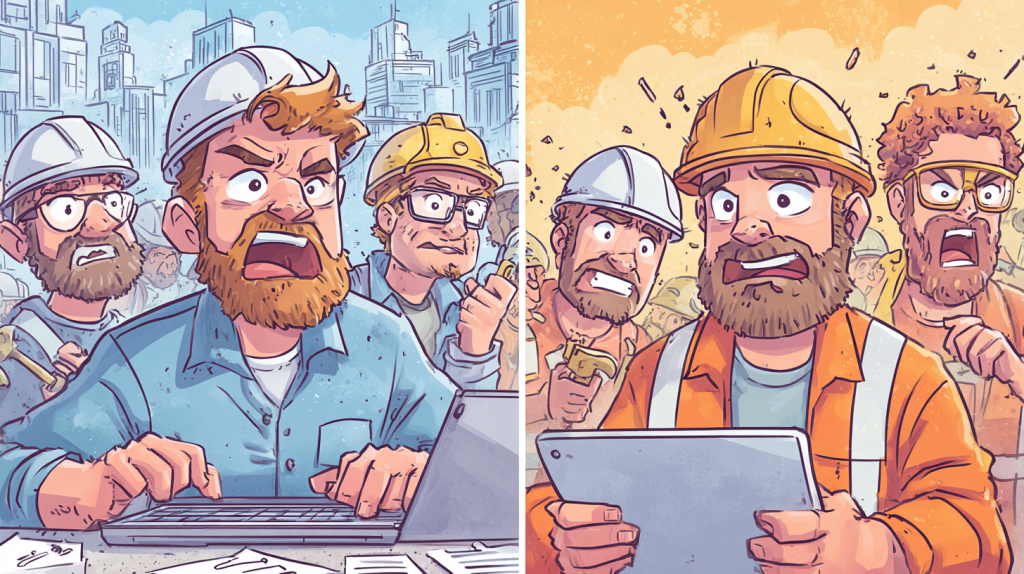
What Does Real-Time Construction Software Do Better?
Real-time construction software shines where planning ends and execution begins. These platforms are built for jobsite visibility, allowing superintendents, foremen, and field teams to update progress, flag delays, log issues, and adjust task assignments as they happen. Instead of relying on forecasts, real-time tools reflect what’s actually occurring on the ground—moment by moment.
This immediacy is powerful. When a crew finishes early or a delivery is delayed, the system updates right away. Everyone from the field to the office sees the change instantly, allowing for faster coordination. Real-time platforms also support mobile access, making it easier for superintendents to update logs, photos, and notes directly from the site.
These tools are especially effective for daily workflows—tracking who’s doing what, what’s behind, and what’s ready for the next trade. They don’t try to predict the future—they help you manage the present with speed and accuracy.
Top Features
- Live updates on task progress, crew status, and delays
- Mobile-friendly interfaces for easy field input
- Centralized logs, RFIs, punch lists, and documents
- Instant notifications for schedule changes or site activity
Top Benefits
- Keeps office and field teams in sync without delays
- Enables faster issue resolution and daily decision-making
- Reduces miscommunication between trades and management
- Supports accurate, up-to-date project tracking
Best Practices
- Log daily activity and updates directly from the field
- Assign tasks and review checklists in real time
- Use mobile tools to reduce time spent on paperwork
- Share dashboards with stakeholders for better visibility
Real-time software keeps the project pulse front and center—helping field leaders respond quickly and keep the schedule on track, no matter what the day brings.
Related Articles:
Best Guide to Construction Management Software
The Best Guide to Delivery Management Systems (DMS) for Commercial Construction
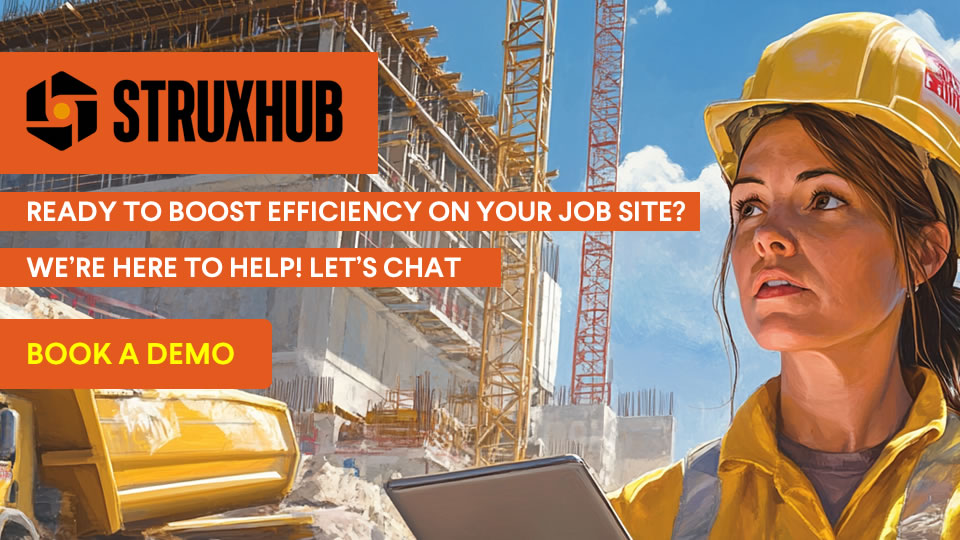
Can You Use AI Scheduling and Real-Time Tools Together?
Absolutely. In fact, many construction teams find the most success by using both systems in tandem. AI scheduling excels at forecasting and long-term planning, while real-time software keeps the daily workflow on track. When combined, they create a powerful end-to-end scheduling system that bridges strategy and execution.
For example, AI tools might predict that a concrete pour could be delayed due to upcoming weather or past crew performance. That insight helps the project manager adjust the schedule. Meanwhile, real-time software ensures that when the crew is on site, progress is tracked, materials are confirmed, and delays are logged as they happen. These live updates then loop back into the AI system, improving future forecasts.
The challenge lies in coordination. If the two tools aren’t integrated or aren’t updated consistently, it can lead to conflicting timelines or missed information. But when teams commit to using both properly, the result is smarter planning and smoother execution—with fewer surprises in between.
Top Features
- Two-way syncing between long-term schedules and daily progress
- Live field data feeding predictive models
- Unified dashboards to view both forecast and real-time status
- Shared updates for trades, PMs, and field supervisors
Top Benefits
- Improves forecast accuracy with real-world data
- Reduces scheduling gaps between the office and jobsite
- Helps align long-term milestones with daily field realities
- Supports proactive planning without losing day-to-day focus
Best Practices
- Use real-time updates to validate and improve AI forecasts
- Share both planning and execution views with the entire team
- Set update routines to keep data flowing in both directions
- Assign one platform as the source of truth for team coordination
When these two technologies work together, teams get the best of both worlds—a strategic roadmap and a reliable way to navigate it each day.
What Are the Limitations of AI-Only or Real-Time-Only Systems?
While both AI scheduling and real-time construction tools bring serious advantages to the jobsite, relying on just one system can expose teams to gaps in performance or visibility. Each has its strengths—but also its limits.
AI-only platforms are excellent for predictive insights, but they often fall short in fast-changing field conditions. If the jobsite experiences a weather delay, an equipment breakdown, or a last-minute scope change, the AI system won’t catch it unless that data is entered manually or synced from another source. This lag in accuracy can lead to plans that look great on paper but fail to reflect reality.
On the flip side, real-time software is great at tracking what’s happening now—but it doesn’t provide long-term predictions or strategic what-if planning. Superintendents can manage the day effectively, but without AI support, they may not see delays coming until they’re already happening.
Teams that rely too heavily on one tool risk making decisions based on either outdated plans or short-term perspectives. The most effective projects use a balance—AI to plan ahead, real-time tools to manage today, and coordination between the two to stay in control throughout the project lifecycle.
Top Features
- AI: better for preconstruction, risk modeling, and forecasting
- Real-time: better for field updates, live coordination, and documentation
- Each platform solves different problems depending on context
- Integration bridges the gaps and improves workflow continuity
Top Benefits
- Avoids blind spots in both planning and execution
- Helps teams act on data that’s both accurate and timely
- Reduces schedule risk through smarter coordination
- Improves confidence in reports, updates, and projections
Best Practices
- Acknowledge the strengths and limitations of each system
- Build a workflow that uses both strategically, not competitively
- Ensure field teams and planners are trained in both tools
- Keep communication open between schedulers and field leads
Technology is only effective when it fits your project reality. Blending AI and real-time tools helps teams overcome the blind spots that come with relying on just one.
How StruxHub Supports Real-Time Scheduling and Field Execution
StruxHub is purpose-built for real-time construction management, helping field teams and superintendents stay fully in sync with project progress. While we don’t replace AI scheduling tools, StruxHub plays a critical role in bridging the gap between high-level planning and daily execution—making sure decisions made in the office hold up on the jobsite.
With StruxHub, superintendents can assign tasks, update statuses, share documents, and flag delays directly from the field. These live updates are visible to the entire team, allowing everyone to adjust quickly and stay aligned. Our system makes it easy to track daily progress, coordinate subcontractors, and maintain accountability across shifting conditions.
StruxHub also complements AI platforms by serving as a clean, organized source of real-time data. If you use predictive scheduling tools, StruxHub gives you the daily reports, activity logs, and crew updates those systems rely on to stay accurate. We don’t just reflect what’s happening—we help you act on it.
Whether you’re building on AI forecasts or just need a more responsive way to manage your field operations, StruxHub gives your team the flexibility, clarity, and speed to move with confidence—no matter what the schedule says.
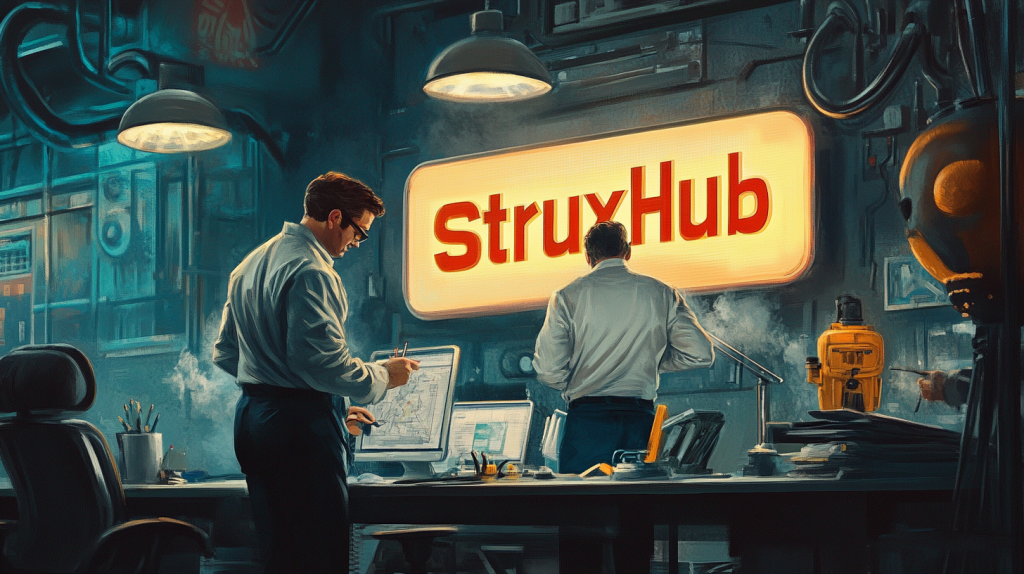
StruxHub
Experience the power of StruxHub today and witness firsthand how it can revolutionize your construction operations.
FAQ
What’s the difference between AI scheduling and real-time construction software?
AI scheduling and real-time construction software serve different functions, even though they both aim to improve project coordination. AI scheduling tools are predictive. They look at historical data, task durations, crew performance, and risk indicators to forecast future delays or optimize the construction schedule. These tools help teams plan ahead by offering simulations and suggestions based on probability and past patterns.
Real-time construction software, on the other hand, is about field visibility. It tracks what’s happening on the jobsite right now—who’s working, what tasks are complete, what delays have occurred, and what’s changing in the moment. These platforms are designed for execution, not forecasting.
While AI scheduling is most useful in preconstruction and long-range planning, real-time tools are critical during active construction phases when quick decisions and constant updates are needed. One helps you anticipate; the other helps you respond.
When used together, they offer a well-rounded approach. You can plan ahead with greater accuracy using AI, while ensuring your actual jobsite conditions are reflected in real-time for better coordination and accountability.
Can AI scheduling tools fully replace traditional scheduling methods?
AI scheduling tools offer a major upgrade from static Gantt charts or manually updated spreadsheets, but they aren’t a complete replacement for traditional scheduling just yet. While they automate many time-consuming tasks—like identifying risks, suggesting timeline shifts, or adjusting critical paths—they still depend on accurate inputs and context from humans.
Superintendents and project managers still play a key role in validating AI recommendations. A delay predicted by AI may not account for unique site conditions, labor constraints, or on-the-fly decisions made in the field. That’s why most teams use AI to enhance—not eliminate—traditional planning techniques.
In practice, AI scheduling is best viewed as a partner. It speeds up the analysis process, helps uncover hidden dependencies, and provides “what if” scenarios to test options. But it works best when paired with insights from experienced planners and live updates from the jobsite.
Over time, as more data becomes available and tools improve, AI may play a larger role. For now, it’s an enhancement that makes your team smarter and faster, but not a full replacement for human judgment and field coordination.
What are the biggest advantages of real-time software on the jobsite?
Real-time construction software helps keep projects on track by showing what’s happening as it unfolds. It eliminates the delay between field activity and team awareness. When a task is completed, a delivery is missed, or a new issue pops up, superintendents can log that update instantly—and the rest of the team sees it in real time.
One of the biggest advantages is faster decision-making. If a crew finishes early or an inspection gets rescheduled, the system reflects that change immediately. Office teams don’t have to wait for a call or email. They can adapt schedules and communicate updates without missing a beat.
Real-time platforms also reduce miscommunication. Subcontractors, foremen, and PMs are all working from the same source of truth. This consistency prevents double booking, schedule confusion, or task overlap. And because everything is documented as it happens, teams can go back and verify what occurred if questions arise later.
For superintendents, it means less time on paperwork and more time leading. For the project as a whole, it means stronger coordination, fewer delays, and smoother delivery. In fast-paced environments, staying current isn’t optional—it’s essential.
Can AI and real-time tools be integrated together?
Yes, and this combination is quickly becoming the preferred setup for many construction firms. AI and real-time construction tools complement each other perfectly—one handles the strategic planning side while the other manages live execution.
Integration allows real-time data (like field updates, task completions, and issue logs) to flow into the AI system. This strengthens the accuracy of forecasts and ensures the scheduling model reflects the actual pace and conditions on the jobsite. In return, AI can suggest schedule adjustments, identify trends, and flag risks that field teams might not see immediately.
This feedback loop gives both office and field leaders better insight and more timely options for decision-making. Some platforms support native integrations, while others require APIs or third-party tools to sync data across systems. Either way, integration is a powerful way to unify your planning and execution workflows.
For best results, teams should ensure both tools are updated regularly, accessible to key roles, and included in weekly reviews. When predictive insights and real-time updates inform each other, your scheduling strategy becomes smarter and more resilient.
What should superintendents consider when choosing between AI and real-time software?
When choosing between AI scheduling and real-time construction software, superintendents should think about the problems they’re trying to solve. If the goal is to plan months in advance, test scenarios, or avoid long-range risks, AI tools are a strong fit. They provide strategic insights and support during preconstruction, milestone planning, or when juggling multiple trades over time.
If the goal is to track who’s on site, manage daily progress, respond to issues fast, or keep field and office teams aligned—real-time software is the better choice. It gives superintendents immediate visibility and helps reduce reaction time when things change unexpectedly.
That said, the decision isn’t always either-or. Many successful teams use both. AI helps them plan better, and real-time tools help them execute more effectively. The key is to choose platforms that are easy to use, mobile-friendly, and built to scale with your project size.
Ultimately, superintendents need tools that make their jobs easier—not more complicated. Whether you’re working on a small renovation or a multi-phase commercial build, the best system is the one that fits your workflow and helps you lead with clarity.
